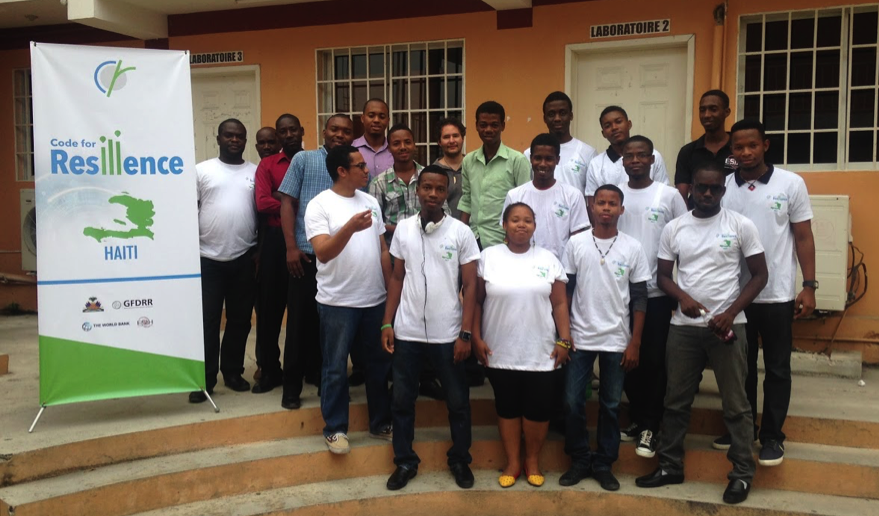STORY HIGHLIGHTS
- Haiti is especially vulnerable to hydrological and meteorological hazards.
- A World Bank collaboration recently delivered the first module of a national data platform, providing interoperability among hydromet networks managed by different entities.
- The work program and engagement model is now ready to be duplicated, tailored, and transferred to other countries.
Hydro-meteorological hazards (tropical cyclones, thunderstorms, hailstorms, tornados, floods and drought) have a significant impact in Haiti’s development. More than 96% of the country’s territory is at risk from these hazards. The country’s economy is heavily dependent on the agricultural sector, which produces more than 25% of the national GDP and is the main source of revenue for rural households. However, only 1% of farmers use irrigation, and understanding rainfall is crucial for the vast majority of farmers to grow crops used as their primary source of food and income.
These farmers, and the country as a whole, are in need of a system that collects reliable hydrological and meteorological data. This information would be useful in facilitating the required coordination with national and local early warning systems to help protect lives and livelihoods.
One promising project called SMS Lapli, which means “SMS Rain” in Haitian Creole, will help the newly created Hydromet Unit at the Ministry of Agriculture to systematically collect, analyze, archive and disseminate rainfall data from more than 100 agro-meteorological stations across the country. This open source application is just the first module of a national data platform allowing different hydromet networks in the country to work together.
SMS Lapli was developed by computer science students under Code for Resilience (CfR) Haiti, a World Bank and GFDRR-supported program that brings together technological innovators with government services to accelerate Haiti’s resilience to natural disasters. Students created SMS Lapli to help Haiti’s hydromet services team consolidate weather, climate, and water data, with a strong focus on local need, sustainability, and reusability. After this successful pilot program in Haiti, the work and program engagement models are now ready to be transferred and tailored to other countries.
The platform, built during a 48-hour Code Sprint by Haitian students during the first weekend of October, was developed after a workshop which included government representatives from several institutions that produce and use hydromet data. “This project is both an intellectual challenge and an opportunity to apply technical knowledge to concrete emerging needs. We really feel we are making a contribution to improving the collection and analysis of data which is so critical for our country”, said Giovanna Blanc, 24, one of students working in the platform. During the next months, the students will continue to work with CfR mentors and local officials to improve SMS Lapli’s performance and add features to help local government agencies with management of hydromet hazards.

Over the past decade externally-funded projects have supported a proliferation of different hydro-meteorological observation networks in Haiti. These investments were often carried out in a piecemeal rather than an integrated fashion but lacked long-term institutional development and a focus on service delivery to end-users. A recently published World Bank report, which evaluated hydromet projects carried out over the past 30 years, highlighted that in order to be fully transformational, investments must weave these three components together.
The recently approved “Strengthening Hydro-meteorological Services” project builds on lessons learned in previous projects and adapts them to the Haitian context. Financed by the Climate Investment Funds, a $5 million investment has been made to focus on supporting the institutional reform of hydromet services. By creating a national open-data platform, the project aims to give decision makers and the public access to information services. In addition, improvement on the delivery of weather information and early warning systems will focus on farmers and civil protection committees. These parties are crucial to the development of innovative data-based applications for modelling and improved anticipation of the impact of hydro-meteorological events and climate change. Ecole Superieure d’Infotronique d’Haiti (ESIH), Haiti’s university of technology, has played a key role coordinating efforts at the local level.
Forward-thinking initiatives like these will be an important part of efforts to help communities prepare for the effects of climate change and reduce risk to natural disasters. Through smart application of technology and strong partnerships between scientists, civil society groups, governments and development institutions, vulnerable communities can better protect lives and safeguard economic progress.
Learn more about mentorship, fellowship, and code sprint activities at www.codeforresilience.org.
